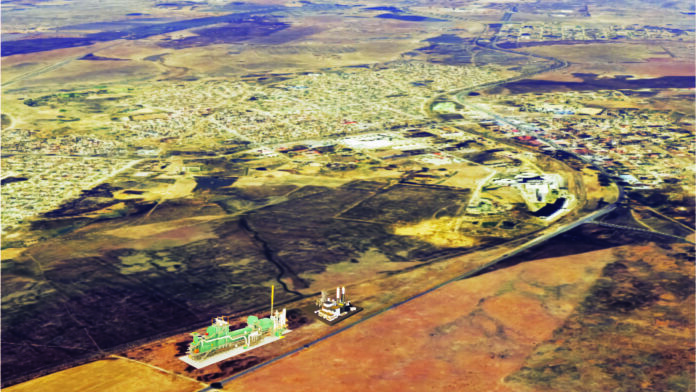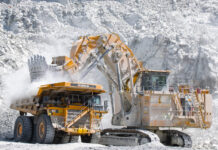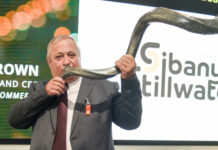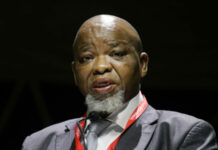
CARBON CAPTURE, UTILISATION AND STORAGE: A SCIENTIFIC INTERVENTION SEEKING TO MITIGATE CO2 EMISSIONS WHILE ENABLING THE JUST TRANSITION
BY THE COUNCIL FOR GEOSCIENCE
The economic impact of coal across South African communities cannot be underestimated, particularly when such an impact is investigated once coal has been fully discontinued. Close to a quarter of a million workers are employed in the coal industry, hence any discontinuation of this fossil fuel cannot be spoken of without considering the socio-economic impact.
The obvious reality is that climate change has become an urgent agenda item, globally. The urgency has been necessitated by the entire world in civil society, private and public sectors as solutions are sought on how to address climate change. South Africa, like the rest of the world, is keen to play a leading role as we seek lasting solutions that protect our environment and reduce greenhouse carbon emissions. That’s a journey.
The Council for Geoscience (CGS), with over 111 years of geoscience knowledge and experience, continues to be fully committed to finding new technologies that will enhance environmentally friendly energy sources. Sustainable solutions are needed though. One of these, currently considered globally as one of the most key solutions, is Carbon Capture, Utilisation and Storage (CCUS). The CGS has embarked on a scientific intervention of CCUS that will see the sustenance of South Africa’s energy and national development needs, while equally contributing positively towards the transition from high to low carbon economy.
Globally, hydrocarbons like coal and oil have been largely depended on. South Africa is no exception. It’s nearly 30 years since the United Nations Framework Convention on Climate Change (UNFCCC) was initiated and most member states are signatories. The UNFCCC called on members to act in the interest of their citizenry and humanity at large.
Humans, as the UNFCCC accurately stipulated, play a key role when it comes to interfering with the climate and largely contribute to environmental degradation. There was now, more than ever before, the urgent desire to move towards energy sources that won’t emit greenhouse gases.
Scientists, appreciative of the role played by coal, have identified the problem and admit how complicated it is. It’s not an easy solve. Solutions must be found as we move to a low carbon economy and science must form the basis of such.
One of these solutions is CCUS. This is a solution inspired, among many other benefits, with the identification of carbon dioxide (CO2) as a greenhouse gas that has become central to global warming.
Advances in CCUS technology globally, including in countries like the United States of America, Norway and Canada have proven the technology to be a feasible alternative to reducing CO2 emissions through utilisation and underground storage in suitable geological formations. Once underground, the CO2 interacts with the geological environment and mineralises, which reduces the risks associated with leakage.
CCUS’ intention is to capture CO2 from the source such as the fired power plants and transport it to carefully selected geological sites for permanent storage, which is supported by an extensive monitoring, pre, during and post injection and storage.
Pilot project
The CGS has recently commenced with geological characterisation of an identified potential site in Leandra, Govan Mbeki Local Municipality in Mpumalanga, where consultations with a myriad of stakeholders from three government spheres, through to local traditional leaders, communities, environmental Non-Government Organisations (NGOs) and farmers to local business have borne fruit, mostly with the long-term goal of seeing the community benefit from this development. The Govan Mbeki Local Municipality has contributed a piece of land for this research to be implemented. The identified site has taken into consideration all factors such as location, geology, socio-economic and technological aspects to make a pilot feasible, thus a site proximal to CO2 emitters.
Mpumalanga is South Africa’s coal capital, making the province an energy hub. Hence, the current coal plants cannot be merely decommissioned without taking into cognisance the implications of such an action.
The two-pronged approach then sees the CGS being on the drive to make South Africans aware of the CCUS technology. The technology is encouraging, though we need to be mindful that it may take time before we see the commercial benefits and return on investment.
The models that have worked in countries such as the US, cannot be readily assumed to also work in SA. Hence, the CGS and other scientists are investing time and effort in extensive techno feasibility studies and technological disruptions, particularly adaptable to sites in South Africa, both on and off-shore.
South Africa has pledged to cut CO2 emissions by 50% by 2030, which is eight years from now. Acknowledging the significance and abundance of coal, it is crucial to explore practical approaches to meet this goal and effectively address emissions stemming from hydrocarbons like coal to enable the country to transition justly to a low GHG economic development trajectory in conjunction with other energy sources such as renewables and nuclear.
Coal is affordable
The truth about coal is that it is affordable. There are enough coal companies in South Africa employing tens of thousands, albeit financing development of coal projects has become increasingly challenging whilst the financing institutions investigate how best to contribute towards the reduction of greenhouse emissions. Technologies need to be applied on how best to use coal as we transition towards a low carbon economy. The big question is whether this just transition can be done sustainably, justly and justifiably?
As we gather empirical data to guide us, we need to strive for sustainable development. As we investigate the benefits of the CCUS project, we must also begin conversations on how to process coal differently. The difference we need to make is how best to reduce CO2 emissions.
Once we have figured this reduction intervention, such a breakthrough will not only benefit Eskom, communities, and business, it will go a long way in the commitment we have made when it comes to CO2 emissions. As Eskom unbundles into three divisions, we do hope these would be synced to address this long-standing problem as Eskom continues to operationally rely on coal.
South Africa’s development needs to prosper, the localisation of its imperatives for communities around such affected communities as the Govan Mbeki Municipality in Mpumalanga, cannot be underestimated
South Africa’s development needs to prosper, the localisation of its imperatives for communities around such affected communities as the Govan Mbeki Municipality in Mpumalanga, cannot be underestimated. Jobs will be created and retained, small businesses might have the opportunity to get involved, while at the same time making history by being part of this one of a kind technological development to be undertaken in SA, that was started right at their doorstep.
The technology associated with CCUS is centrally developed as an economic contributor that aims to do better and contribute generously towards the country’s gross domestic product (GDP). There is no denying that South Africa desperately needs energy security. The cost-competitive energy security goes hand in hand with economic development. That economic development and growth are key in a country that has a high number of unemployment and poverty levels, making it pivotal that the energy security benefits businesses and society at large. It is precisely for this reason that the CGS adopted and applied the African proverb that states that “if you want to go somewhere fast, go alone, but if you want to go far and secure victory, go together”. In this regard, the South African government assigned the CGS as an implementing agent for the CCUS research in partnership with the World Bank. The CGS has further developed a network of private business partnerships that span The Development Bank of Southern Africa (DBSA), Sasol and Exxaro, whilst others are still in the pipeline for finalisation. With such partners, this intervention is guaranteed to benefit from collective wisdom, resource crowding and accelerated implementation of ideas and technological applications.
The CCUS project has underlined how pivotal South Africa’s commitment to reducing greenhouse gas emissions is. The project directly responds to government’s call that innovative solutions are sought for a transition to a low carbon economy.
In the coming years, the transition will indeed through initiatives such as the CCUS play a leading role that will shape and be exemplary to sub-Saharan Africa when it comes to reducing greenhouse gas emissions. We are encouraged that with the implementation of utilisation (working closely with petrochemical and agriculture industries), innovative solutions will come in handy as we support the CCUS project.
Young Ugandan activist, Vanessa Nakate, founder of the Rise Up Movement, recently spoke out against the development of new coal stations: “Why is it so easy for leaders to open new coal power plants, construct oil pipelines, and frack gas, which are all destroying our planet, and harming the future and present for their children.”
It’s a question that cannot be brushed aside, one that a project such as CCUS aims to answer as it undertakes to be part of the solution. While the journey of this project can be traced back to Leandra, the ultimate benefit will be enjoyed by the entire country. Moreover, it has been proven from other parts of the world that CCUS could be a viable option – our aim though, is to not only copy from the work that’s already begun in other parts of the world, but we endeavour to deliver a project that takes into account our diverse geology, unique environment and overall technical excellence of our South African institutions.











